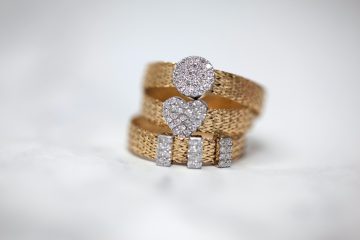Silver named Argentum in Latin is a metallic element that belongs to the group of precious metals and the group of coin metals. Silver is used for jewelry, food silver, and ornamental objects, but more than 60% of the available silver is used in the electronics and photo industry.
The most common silver quality in jewelry is called 925 Sterling silver and consists of 92.5% silver and the remainder copper and other metals which is declared by stamping the number 925.
Silver in its purest form is very soft, therefore the silver is mixed with other metals to get durable jewelry and products. The limit for being called silver lies at the silver content of 83%, the remaining 17% is usually copper. 830 silver is called silverware and is the most common fin content in food silver. 925 Sterling silver is whiter and softer to work than silver and is best suited for jewelry making.
Oxidized silver
Some of our jewelry is oxidized. This is done to accentuate details or create contrasts to the white clean silver surface. Silver is oxidized with chemicals and is a surface treatment that is polished or faded when used. If you want to keep the dark surface, you should, therefore, remove the jewelry when in contact with water. We offer re-oxidation of jewelry if needed.
Gold-plated silver
Some of our jewelry is gold plated / gilded. This means that the jewelry is coated with a thin layer of genuine gold. The underlying metal is usually silver unless otherwise stated.
Jewelry – history
Throughout history, jewelry has been used to adorn the body but has also been a symbol of other values such as wealth, religion, status, or cultural belonging for millennia.
The wearer of jewelry is historically as much a male as a female phenomenon. Our most common types of jewelry are necklaces, bracelets, rings, and earrings. More recently, jewelry such as charms, ear-cuffs, and piercings have become popular. Today, watches are also widely regarded as jewelry.



